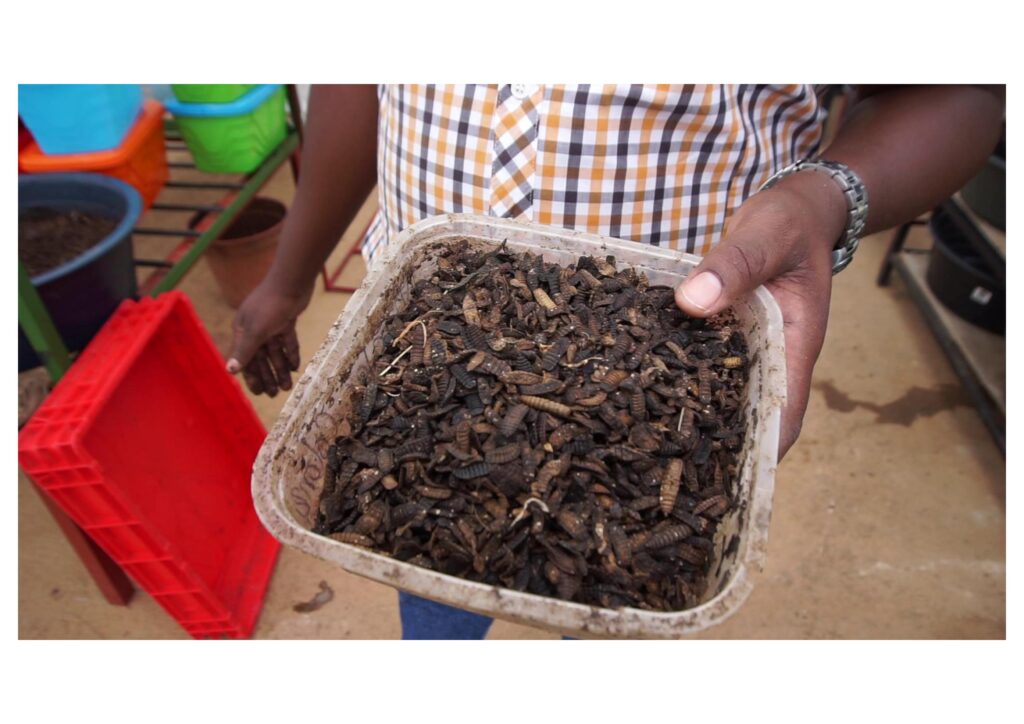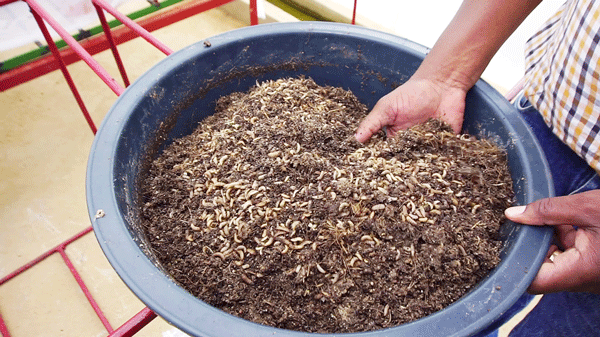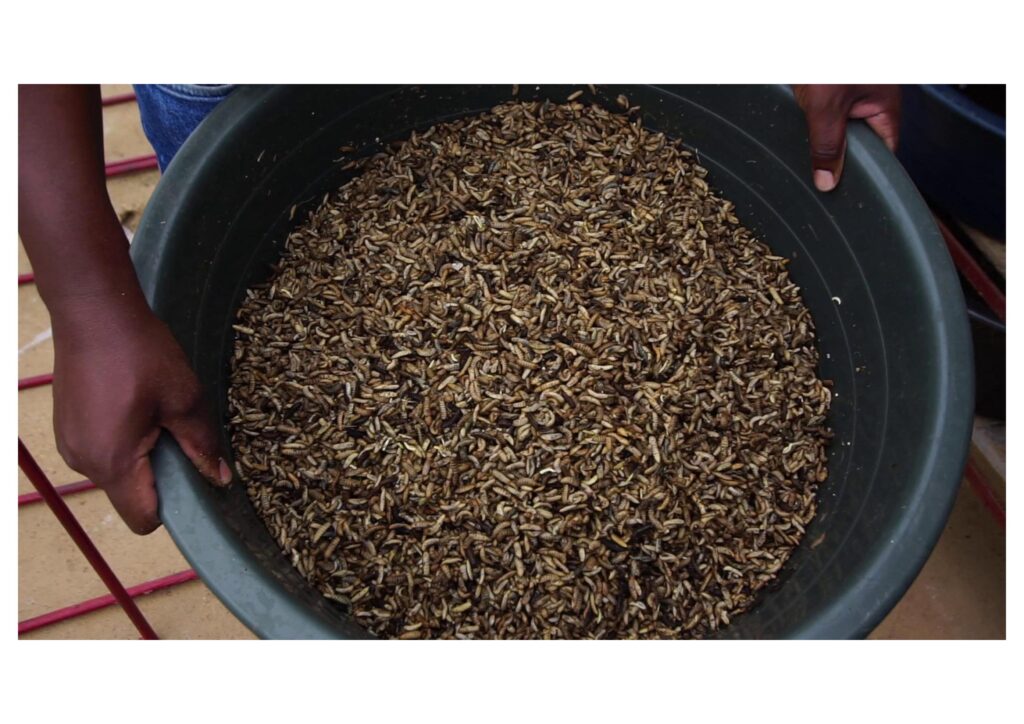
BY LEARNMORE NYONI and PAULINE UNGAJI (KENYA) Good nutrition is essential for profitable poultry production studies, however, show that, feed is beyond the reach of many small-holder farmers in Africa, since it constitutes 70% of the total costs of production.
These exorbitant costs of feed are largely driven by high prices and scarcity of fishmeal and soya. Africa accounts for less than 1% of the global soya production, hence it is a net importer of not only soya but also fishmeal.
These costs are not sustainable for small-holder poultry farmers across Africa. Prices of these two protein sources have continued to increase unabated over the past five years.
This has pushed the market prices of animal and animal products up, affecting the accessibility of animal-based protein for many people across the continent.
Zimbabwe produces 71 290 tonnes of soya annually which is just 30% of its national demand. The difference is imported.
Rwanda on the other hand, imports protein raw materials for animal feed, like soybeans, often at high prices.
“Between 2019 and 2022, prices rose by over 130%, from US$0,44 per kilogramme to US$1,01 per kilogramme in 2022, forcing farmers to make do with lower nutrient feeds,” explained Solange Uwituze, the deputy director general of the Rwanda Agriculture and Animal Resources Development Board.
The situation is not any better in Kenya.
- Chamisa under fire over US$120K donation
- Mavhunga puts DeMbare into Chibuku quarterfinals
- Pension funds bet on Cabora Bassa oilfields
- Councils defy govt fire tender directive
Keep Reading
“Kenya requires about 70 000 metric tonnes of soybean per year, but the supply hardly reaches 15 000 metric tonnes. And the competition for human consumption has made things worse,” explains Jo Ryan, interim CEO for True Trade Africa, a social enterprise providing smallholder farmers with a route to market and fair prices for their produce.
COVID-19 has compounded the situation Food supply disruptions, failure to access labour, fertilizers and seeds have also led to major effects on poultry and livestock production.
A 2021 Food and Agriculture Organisation (FAO) report on the impacts of COVID-19 on Africa notes that in Western Africa, most livestock markets were closed during the pandemic and this caused a drop in the supply of cattle and other small ruminants.
These food supply disruptions, caused by the global COVID-19 pandemic have hampered access to nutritional foods especially in Africa.
Further, moderate and severe food insecurity rose from 51% in 2019 to 75% in 2020 in Nigeria and from 43% to 49% in South Africa during the same period, added the FAO report.
 Due to food insecurity, a 2020 report shows that, 1 in every 5 people in Sub-Saharan Africa are undernourished.
Due to food insecurity, a 2020 report shows that, 1 in every 5 people in Sub-Saharan Africa are undernourished.
This calls for innovative solutions to promote food production and cushion smallholder farmers against climate and other external shocks such as COVID-19.
The cost of wheat, another important nutritional variable in Africa’s food basket, has also been affected by the recent Russo-Ukraine war.
Zimbabwe, for instance, imports half of its wheat from Russia. The war is likely to increase food prices in Zimbabwe and lead to a reduction in the consumption of nutritional diets.
A FAO regional overview of food security and nutrition 2020 report recommends the transformation of food systems to lower the costs of production and make healthy diets more accessible for all.
A cheap solution to Africa’s food and nutrition problems
Black soldier fly (BSF) larvae is a low-cost protein source in animal feed production generating interest across Africa.
One can produce the BSF larvae from animal manure or vegetable waste or a combination of both. Larvae will be fully dried and ready for use as animal feed in 22-24 days, a very short period when compared to the traditional protein alternative soya, which takes no less than 6 months to be ready for use.
UKaid in Zimbabwe has been funding efforts towards the production of black soldier fly larvae as a low-cost intervention to support poultry, fish and pig farmers in Zimbabwe.

UKaid also supported the training of extension workers and the setting up of demo sites so that communities may learn and adopt this low-cost protein source for poultry production.
“I see a lot of NGOs training small-holder farmers on the use of black soldier fly in animal feed and I know it is a new area but I am impressed by how farmers have adopted it and how even the government has adopted the use of black soldier fly in Zimbabwe,” said Lesley Macheka an insects researcher based in Zimbabwe.
With support from UKaid, Chinhoyi University of Technology has trained a lot of farmers on the use of the black soldier fly and later this year Marondera University of Agricultural Sciences and Technology in Zimbabwe will start the rearing of crickets for feed.
“I see a huge potential in this area. To increase uptake, we need to publicise this cheap protein alternative through the media so that we reach all facets of our economy,” Macheka added.
Out of the need for cheaper chicken feed for his poultry project, Shem Awiri decided to start a BSF project within his farm located in Lukenya, Machakos County, some 100 kilometres from Kenya’s capital, Nairobi.
Bugs Life Protein farm has now become a supplier of dry weight BSF larvae not just for its chicken project, but also sells to a local animal feed company.
“We grow high quality protein and feed and believe in sustaining the virtuous cycle so the chicken excrete manure which is fed to the insects, and the insects convert the manure and excess feed waste into protein,” said Awiri.
The BSF section is housed in two large greenhouses each measuring 42m by 8m, as well as a warehouse within their 20-acre farm.
Here, they produce one tonne of dry weight BSF larvae per month.
“From whatever we produce, we feed half of it to our poultry and the other half we sell to a local animal feed company. We also produce BSF eggs for breeding, which we sell to upcoming local farmers. After the final harvesting stage, the bio waste excretion is used as fertilizer,” explains Awiri.
In Tanzania, Otaigo Elisha, runs NovFeed BSF farm, located in the coastal city of Dar es Salam.
For the past five years, the company has been supporting local small fish farmers, by developing a low-cost, sustainable fish feed. The farm raises black soldier fly maggots, dries and grinds them into a high-protein powder.
As an alternative, he said, many fish farmers formulated their own feed on-site using seasonal ingredients and silver cyprinid (omena) in small batches.
“This also perpetuated the gap in affordable and quality farmed fish for consumers to buy, which impacted the health and well-being of low-income Tanzanian households,” he adds.
Currently, soybeans and omena are the main protein ingredients in animal feed processing in Africa.
BSF comes in handy to replace these two protein sources for animal feed whose price continues to increase beyond the reach of many African farmers.
A resilient and circular agri-economy that conserves the environment BSF can be produced from waste, in huge quantities, from small units and with a low carbon footprint. This helps clear waste, reduce deforestation and carbon emissions synonymous with commercial livestock production and plant agriculture.
Chinhoyi University of Technology in Zimbabwe has been the leading centre of insect farming in Zimbabwe. It has set up a circular system where waste from its kitchen is used to feed into its BSF production unit.
Using a combination of kitchen waste, pig manure and a secret ingredient, the University is producing BSF larvae which it is using to develop commercial stockfeed formulas for chickens and crocodiles.

“This composition of different organic substrates is shredded into a mixture before mixing it with black soldier fly to develop the chicken feed formula. This formula gives us good rates in terms of nutrition, good growth parameters and good reproductive rates among other things,” said Robert Musundire, lead insects scientist at Chinhoyi University of Technology.
The farm also makes use of sorghum malt waste from local brewery to add to the BSF mix producing a non-smelly balanced protein composition for stockfeeds.
“In the current process we are producing 300g of eggs and we are still growing, we want to produce a consistent rate of 3kg of eggs, packaged in 500g and 1kg depending on the requirements of the customer.
Chinhoyi University of Technology commercially trades a kilogramme of BSF larvae at US$20.
“We have tied this process with our horticulture production and poultry production creating a circular system where very little is wasted.
Other farmers, most of whom were trained at Chinhoyi University of Technology have also started producing BSF for their subsistence and a little extra to sell.
However, some countries like Kenya and South Africa have viable commercial enterprises selling BSF to individual farmers and stockfeed producing companies.
BSF’s first leading global player, Agriprotein, has been running successfully in South Africa for over a decade, before opening other branches in Europe and the United States of America.
Protein production and climate change A 9x6m greenhouse unit can produce a tonne of BSF protein content in 14 days. In comparison, a hectare of soya production takes no less than 4 months, using tractors and agro-chemicals that increase the carbon footprint, said Musundire.
BSF production, limits the traditional overreliance on plant-based proteins which are more laborious to produce and with a higher carbon footprint.
“The waste we are using could have been in the dumpsites generating a lot of ammonia, carbon and other emissions that are harmful to the environment, this insect (BSF) is helping reduce this impact to the environment including those nutrients that can potentially get to river systems and then increase eutrophication among other bad things.
“So whatever comes in terms of manure, we take it back to the land and the process helps reduce carbon emissions,” said Musundire.
Turning a destructive crop pest into a stockfeed In Domboshava Zimbabwe, a 30-year-old innovator and ABC Plus Private Limited Company co-founder Aubrey Ruvarashe Musiwa is converting armoured bush crickets into stockfeed.
Studies have shown that the armoured bush cricket is the second most destructive pest in southern Africa after quelea birds.
“When I was working in Mbire district in 2014, I saw the destruction that this pest was causing to the fields and decided to research on ways of making this pest productive.
“I have developed two-phase broiler feed from the armoured bush cricket,” said Musiwa.
He is also developing pharmaceutical and beauty oils from this insect.
“Trials of his stockfeed show a leaner broiler, we are turning what was considered a pest into something productive,” he added.
Farmers in Zimbabwe are using BSF, mealworms and crickets to develop low-cost stockfeed.
Insects can replace soya and fishmeal as protein sources in animal feed production A study, Edible insect farming as an emerging and profitable enterprise in East Africa, conducted by various African scientists and published on the scientific website ScienceDirect last year, estimates that up to 9 780 metric tonnes of dried BSF proteins are produced annually in the region, through a circular economy approach. The report indicates that BSF production is sufficient to substitute fish or soybean meal in animal feed.
According to research conducted by ICIPE in 2020, the BSF farming market in Kenya grew by an estimated 63 small to medium-scale enterprises in 2020, where over 5 000 farmers have been trained in BSF rearing by the institute.
Rwanda has recorded similar success.
“We project a scaling-up of operations to produce at least 5 000 tonnes of dry insects for poultry feed, while processing about 100 000 metric tonnes of waste annually.
“Our aim is to reach a production capacity of 25 000 metric tonnes of dry insects by processing over 500 000 metric tonnes of waste annually,” noted Jean Baptiste Musabyimana, CEO and founder, Abusol Ltd, a commercial poultry farm based in Nyamata, Rwanda.
According to the Black Soldier Fly Market-Global Opportunity Analysis and Industry Forecast (2020-30) report by Meticulous Research, the BSF market is expected to reach US$3,4 billion by 2030 owing to the growing aquaculture industry, increase in demand for alternative proteins and increased government approvals of insects as stockfeed.
A huge opportunity lies ahead for Africa to tap into the growing insect market and solve its dual problem of malnutrition and food shortages.
- This work was supported by a Global Nutrition and Food Security Reporting Fellowship from the International Centre for Journalists and the Eleanor Crook Foundation.







